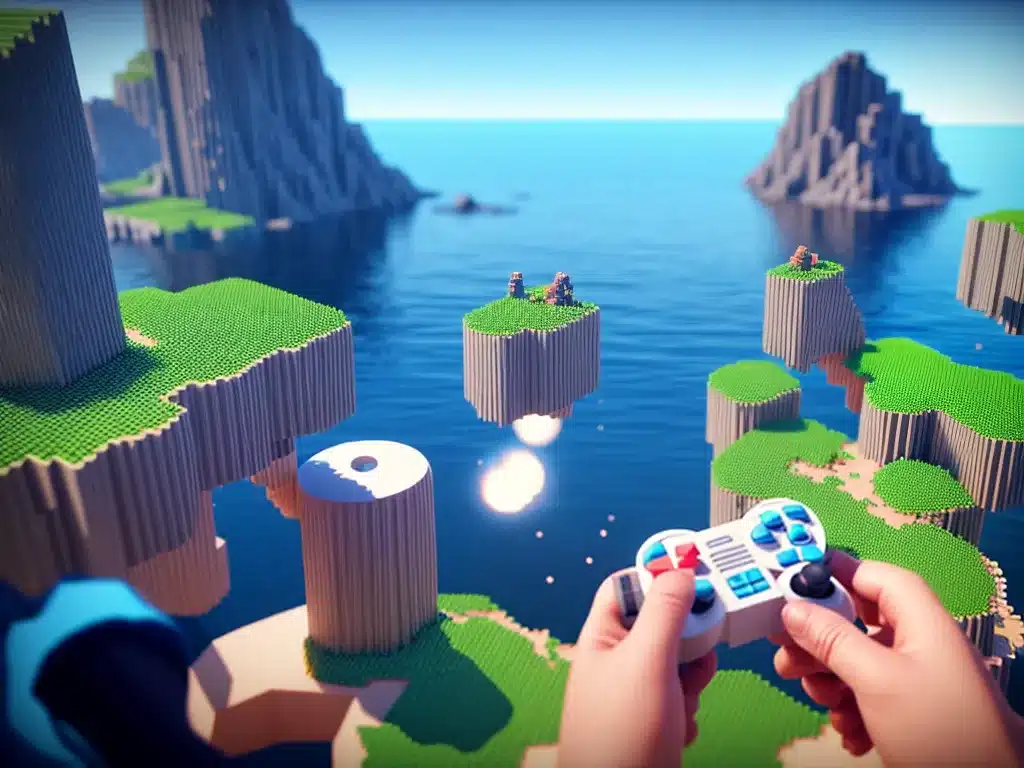Introduction
Voxel graphics represent an exciting new frontier in video game visuals and technology. As games become more immersive and detailed, developers are looking beyond traditional polygon-based graphics toward new approaches like voxel-based rendering. In this article, I’ll provide an in-depth look at what voxels are, how they work, key benefits and limitations, and the future possibilities for voxel graphics. There is enormous potential for voxel technology to revolutionize gaming visuals.
What Are Voxels?
Voxels are essentially 3D pixels. While traditional polygon graphics render surfaces as meshes of triangles, voxels build objects volumetrically out of small cube blocks.
Imagine stacking LEGO blocks to construct a complex 3D shape. Voxels operate in a similar way, using tiny cubic elements as building blocks. Each voxel carries information like color, transparency, and position. Stacked together, these voxels can represent a game object’s full volume and interior details, not just the surface.
Key differences from polygons:
- Volumetric – Voxels have volume, not just surface area. This allows representation of interior details.
- Discrete – Voxels are discrete 3D elements, not a continous surface mesh.
- Grid-based – Voxels align to a 3D grid, allowing easy segmentation.
Modern voxel engines can utilize billions of these voxel building blocks to compose detailed game worlds.
How Do Voxels Work?
There are two core techniques used to render voxel graphics:
Ray Casting
Ray casting was one of the earliest methods used for voxel rendering. It works by casting out numerous rays from the camera, detecting voxel intersections along the rays, and plotting pixels based on the nearest valid voxel volume.
Ray marching example – rays cast from camera detect voxel collisions
Ray casting allows efficient rendering of voxel data, but lacks advanced visual effects possible with modern polygon rasterization.
Surface Extraction
More recent voxel engines use surface extraction to convert the voxel volume into a geometric mesh for rendering. The outer surface of the voxel volume is analyzed to extract a polygonal mesh ‘shell’ that approximates the solid voxel shape.
Standard graphics pipelines can then render this polygon mesh using traditional practices like texturing, lighting, and shading.
Voxel data converted to polygon mesh for rendering
Surface extraction unlocks modern graphical capabilities for voxels, but requires added geometry processing.
Benefits of Voxels in Games
Let’s explore some key advantages voxel graphics offer for certain game styles and rendering needs:
Detailed Volumetric Worlds
The volumetric nature of voxels excels at representing detailed 3D environments with complex geometry. Voxel worlds feel more ‘solid’ and lifelike. Intricate caves, overhangs, arches, and tunnels are easy to produce.
Voxels can efficiently represent complex 3D world geometry
Dynamic Destruction and Deformation
Voxels enable real-time destruction and deformation of game environments. Removing or altering voxels is fast and easy. No slow re-meshing needed! This makes voxels ideal for destructible surroundings in games like Minecraft.

Voxel environments can deform dynamically without costly re-meshing
Interactive Editing Tools
The segmented nature of voxels allows intuitive editing of virtual worlds. Voxel models integrate well with procedural generation and 3D editing tools. Designers can sculpt stunning environments with ease.
Unique Art Styles
The voxel aesthetic lends itself to stylized, low-poly art styles. Voxel models can appear beautifully simple or intricately complex while having lower polygon counts than conventional 3D assets.
Voxel graphics enable appealing low-poly aesthetics
Efficient Storage and Compression
Voxels align to a grid, so voxel data compresses very efficiently compared to unstructured polygon geometry. This allows for compact storage and faster streaming.
Limitations and Challenges
However, voxel graphics also pose some unique limitations:
No Native Curved Surfaces
The cubic nature of voxels leads to jagged, pixelated curves and diagonals. Additional tessellation is needed to smooth surfaces.
Memory Intensive
Dense voxel representations require huge amounts of memory. Voxelization beyond low resolutions can greatly increase RAM needs.
Model Complexity Limits
While voxels excel at natural 3D geometry, they struggle to efficiently represent man-made models with lots of flat surfaces or sharp edges. A vehicle model for example may need far more voxels than polygons.
Specialized Rendering Methods
Voxels require custom voxelization and rendering algorithms tailored for cubic volumes. This contrasts with highly optimized conventional polygon pipelines.
The Future of Voxels
Despite current limitations, voxel technology will likely expand in the future driven by several trends:
-
Improved Procedural Generation – smarter algorithms reduce voxel memory needs while enhancing detail.
-
Cloud Computing – streaming voxel data from remote servers provides near unlimited resources.
-
Advanced Surface Reconstruction – new approaches smooth voxel surfaces for high visual fidelity.
-
Enhanced Developer Tools – Voxel workflows and pipelines mature to leverage unique benefits.
For certain game genres and platforms, voxel graphics open doors to stunning new visual frontiers. As hardware and software continue to evolve, voxel-based game worlds offer an exciting glimpse into the 3D environments of tomorrow. Expect voxels to empower more immersive destruction, animation, and interactivity for many gaming experiences yet to come.

















